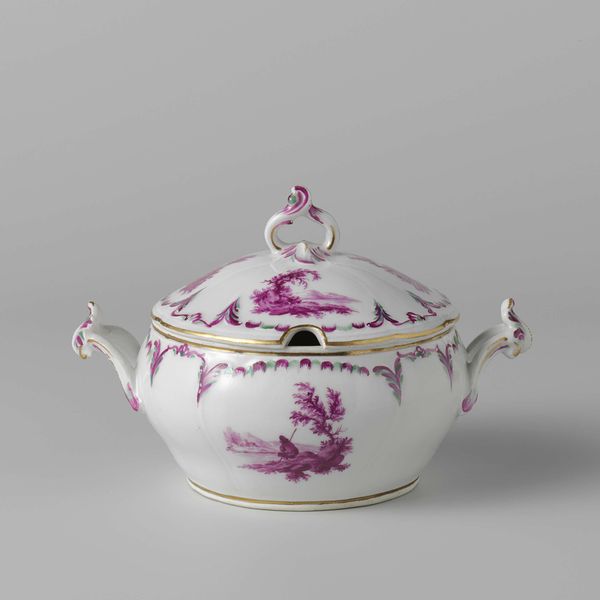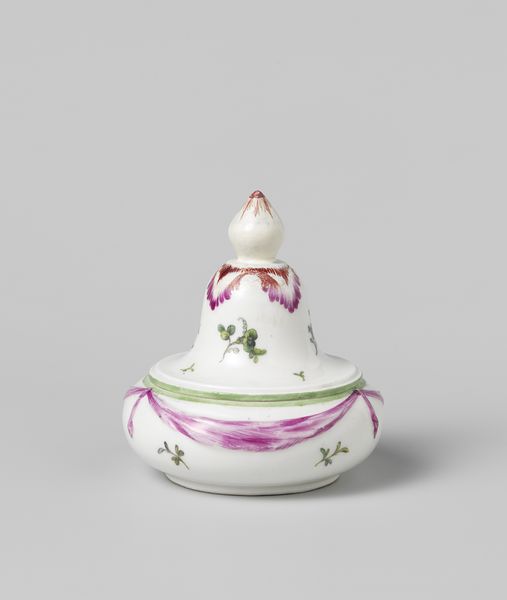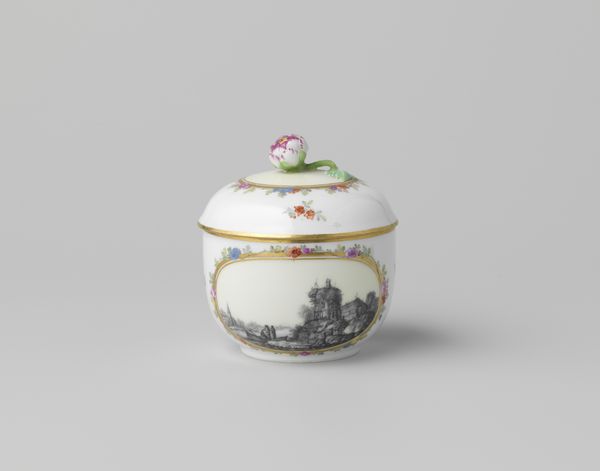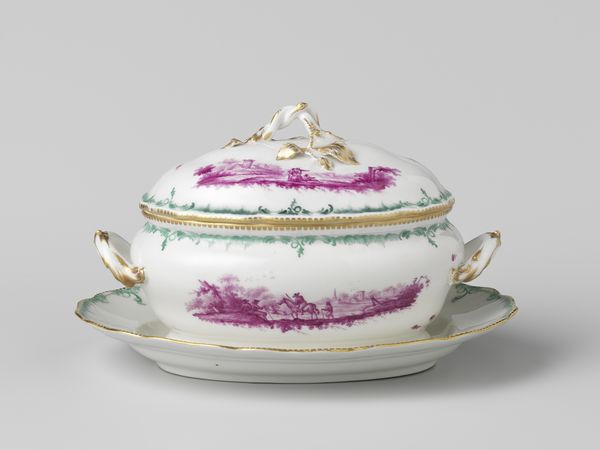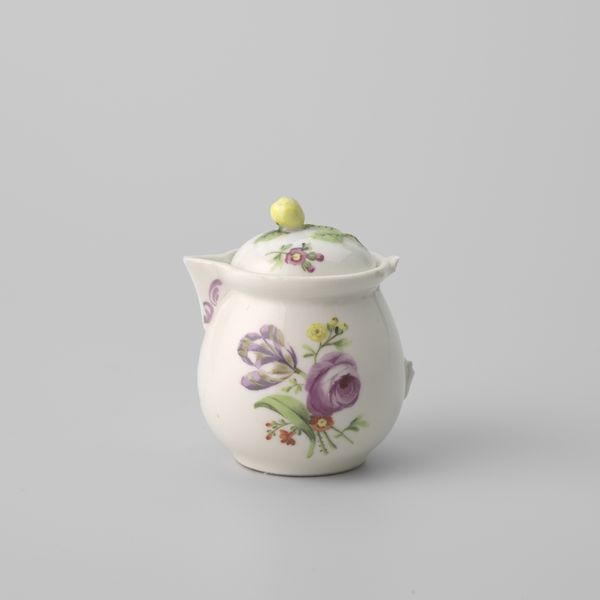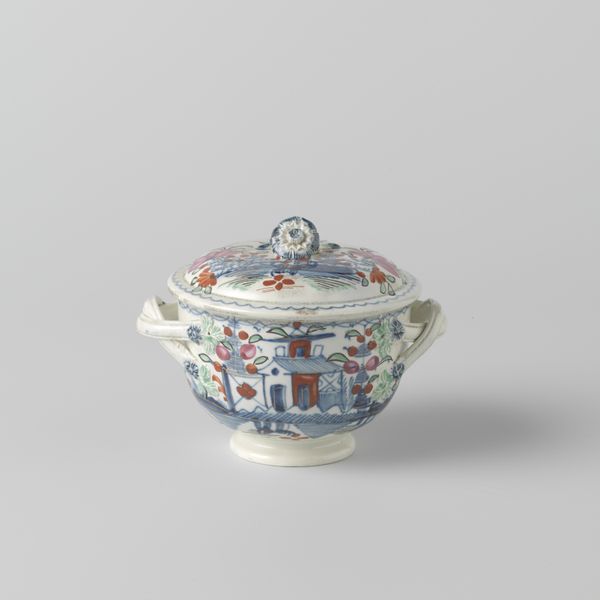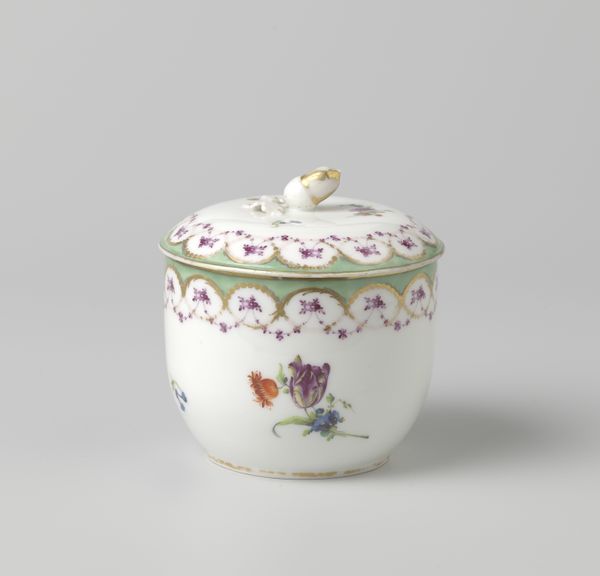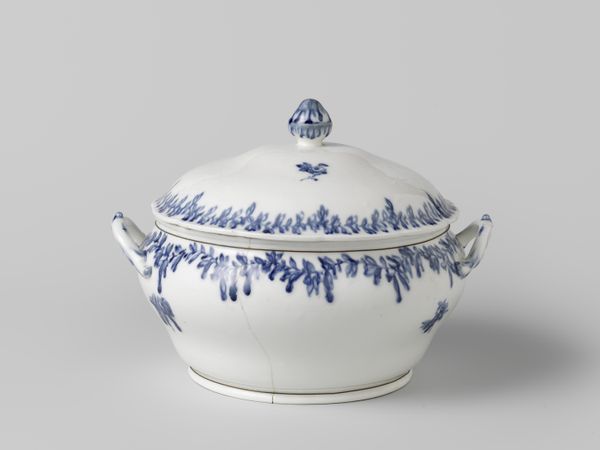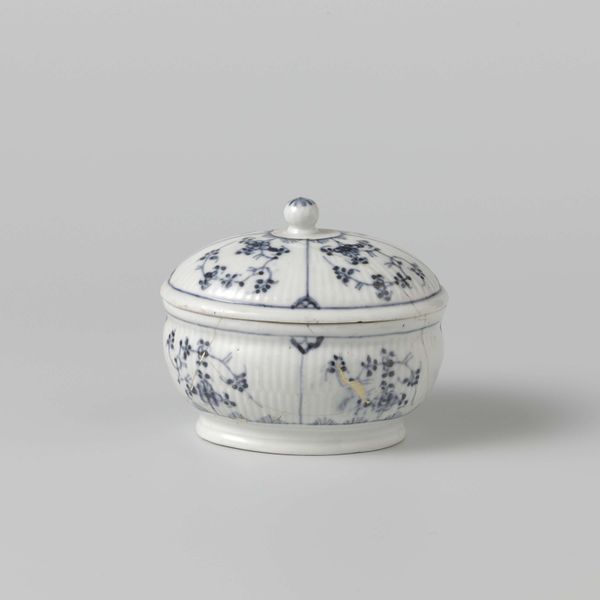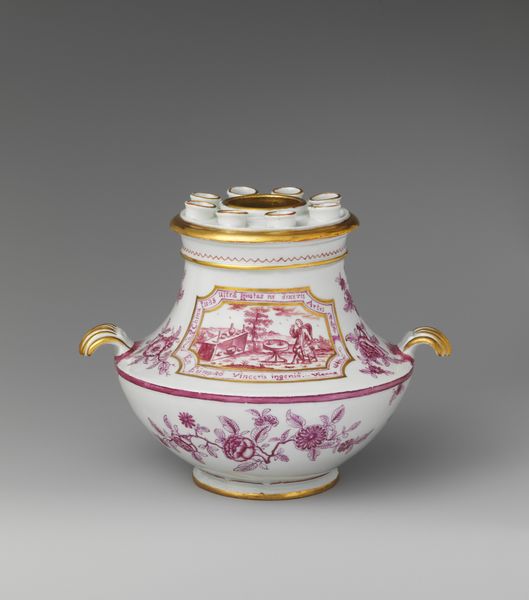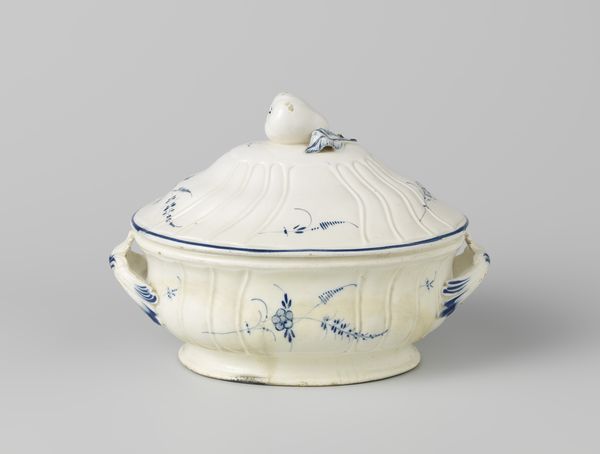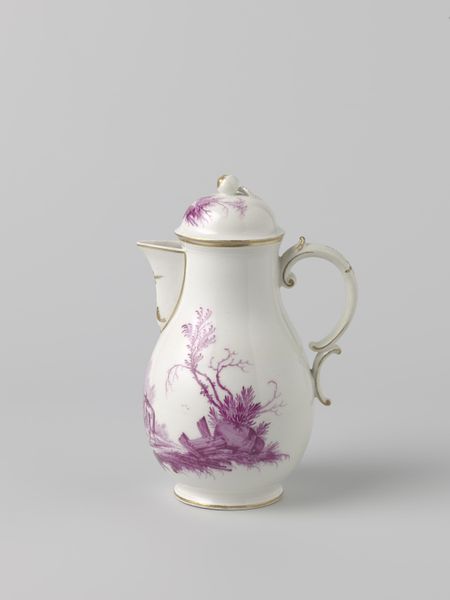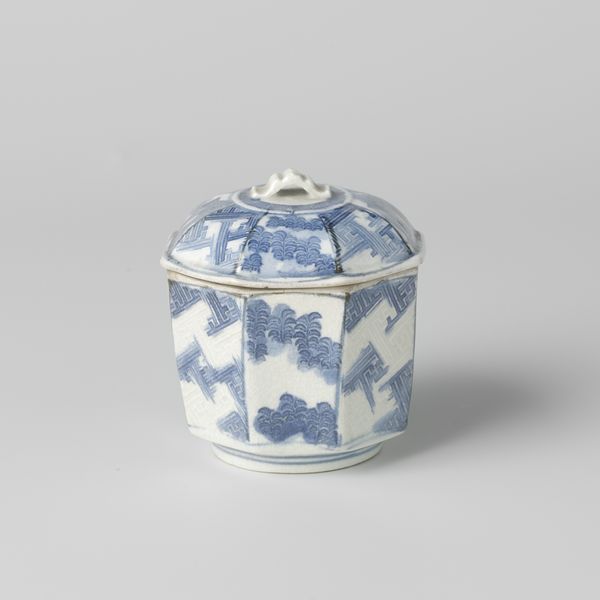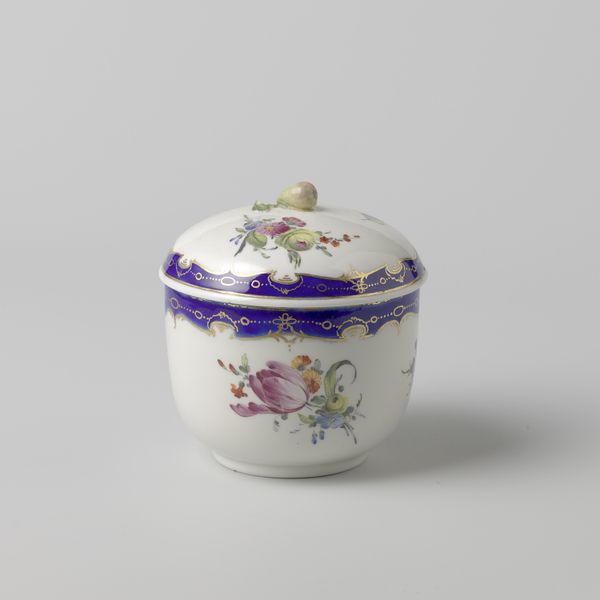
Tabakspot, beschilderd met figuren in een landschap met boerderij c. 1774 - 1778
0:00
0:00
ceramic, earthenware
#
neoclassicism
#
landscape
#
ceramic
#
earthenware
#
genre-painting
Dimensions: height 5.5 cm, diameter 12 cm
Copyright: Rijks Museum: Open Domain
Editor: Here we have a lidded tobacco pot made around 1774-1778 in Loosdrecht, currently held at the Rijksmuseum. It's earthenware, and it's delicately painted with purple scenes of rural life. There’s something so quaint and idyllic about the whole piece. What stories do you see in it? Curator: The lilac, or *camaieu*, scenes definitely evoke a specific feeling of nostalgia, of simpler times, right? I’m interested in how this “genre-painting” is lifted from a large-scale canvas to a diminutive and intimate object. What does that shift do to the reading of the image? What is this, but a symbolic gesture towards bucolic values at the moment that Europe is entering an industrial age? Editor: So it's like a yearning for an imagined past? I see what you mean about it being on something small… it’s almost like a keepsake. Like a souvenir. Curator: Exactly! This also speaks to me about the cultural memory of porcelain itself. Doesn’t it seem almost intentionally fragile, to remind one of value, preciousness, and trade? That pigment was also incredibly expensive. Do you notice how the gold trim emphasizes this reading? Editor: Absolutely. The gold makes it feel even more precious and curated. I hadn't considered how the choice of object adds layers to the landscape depicted on it. Curator: It invites you to meditate on the multiple layers of meaning embedded in seemingly simple images, doesn't it? Consider this a memento mori about the transient nature of the rural way of life, carefully and deliberately produced during intense industrial development. Editor: I will. Thank you for untangling these symbols for me!
Comments
No comments
Be the first to comment and join the conversation on the ultimate creative platform.
